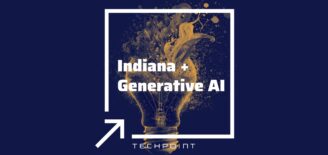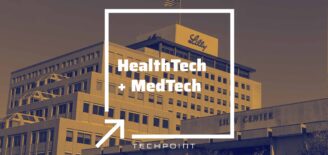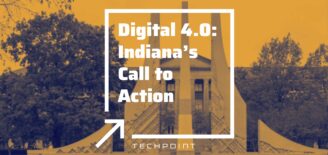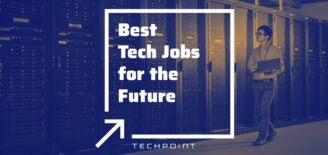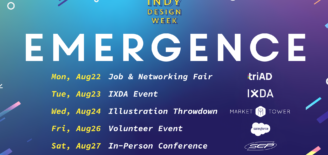Interview: IU Health’s new CIO focuses on Indianapolis tech talent
IU Health, the largest healthcare system in the state, recently hired a new chief information officer (CIO). I sat down with Mark Lantzy to get a better understanding of the IT organization at IU Health and to gain some insight into Lantzy’s technology priorities.
Lantzy joined IU Health in March after most recently serving as COO and then CIO at Gateway Health in Pittsburgh, and more than 20 years total in leadership roles with Accenture, Aetna, and WellCare.
“There is a rapidly growing technology sector in Indianapolis and the opportunity to bring innovation and new approaches to our health information technology capability is exciting,” Lantzy said when he took his new job.
Naturally, we wanted to find out more about Lantzy’s vision and ambitions for the future of technology within IU Health.
One interesting side note we discovered is that IU Health wants to be recognized as an IT brand for new grads and existing employees looking for a change. IU Health is eager to hire passionate workers who want to join an organization doing meaningful work in healthcare.
What is the landscape for tech talent at IU Health? Is it something that is much in demand or are you in sort of a steady state?
Lantzy: Over the last three years, I would characterize IU Health as largely a steady–state information technology employer. One of the things we’ve been doing very successfully is taking our electronic medical records (EMR) system and getting it moved out to as many users as possible. It is currently extended across our 15 hospitals and most of our physician practices.
At any given point in time, more than 9,000 users are active in our EMR. There is a lot of support work that goes on behind the scenes and capability enhancement. The health industry is evolving from a fee-for-service program to a value-based reimbursement model.
IU Health needs to understand the populations it serves, the needs of the population, the quality we’re delivering, and the cost of care. This requires an extensive and robust information technology and data management capability.
Are you moving to a model of data and computer-assisted decision-making?
Lantzy: We are. IU Health needs to be able to take everything we know about patients and put it in front of a clinician in a way that is easily digested. That means the data are timely, appropriate at the point of care, and supportive of decision-making. This is going to be a differentiator so we can make that intervention very meaningful for the patient and clinician.
I’m curious about how this is ultimately going to happen.
You have some models that serve data to IBM’s Watson or to a Watson-like product that can then serve back responses. But then you have some that would go towards a sort of decision engine model in which you would build that brain internally. Do you have any sort of predisposition?
Lantzy: Let’s talk about the complexity of this idea. There have been attempts to take Watson or Watson-like machines and apply them to health care. One of the things we’ve seen is that it’s very difficult to consume the volume and the complexity of the data that go into healthcare decision–making.
Take the rate at which therapies and patient problems are evolving. Patients bring unique problems to us. Not every therapy is going to be as impactful to one individual as another. For a machine to put together a package to understand an individual, the way therapies impact the individual, and her diagnosis, and then learn and improve those therapies over time, is difficult.
We are very interested in looking at the potential but also realize the machine does not have to make a decision to be effective. Providing decision support and collaboration tools, especially for complex patients, is our goal.
What is the structure of your tech talent base inside IU Health right now?
Lantzy: We have just under 600 full-time employees. IU Health is a large employer of technology-skilled staff.
What are the breakdowns of those occupations and skill sets?
Lantzy: About 250 of those individuals support the EMR systems and the ancillary clinical information systems associated with the EMR, including operations, system administration, small enhancements, and new projects. The other 350 are allocated to business systems, decision support, IT infrastructure and administrative functions.
What’s in the new development category?
Lantzy: Two areas come to mind. The first is interoperability. While this is not new, we have not made the kind of progress patients expect. We continue to look at every opportunity to assemble the clinical data for a patient and make it useful in the clinical setting. This means aggregating and making available patient data such as current medications regardless of who prescribed that medication.
The second is population healthcare. This is the ability to identify specific individual needs based on medical history, and provide tailored programs that close gaps in care, improve an individual’s health, and manage a healthier lifestyle.
What are priorities in the tech talent department?
What do you find are the most difficult positions within that tech talent to fill?
Lantzy: Our top talent priority is our decision support, business intelligence and analytics area. It’s something that is in very high demand because generally you are looking for individuals who understand data and how to work with it but also have enough clinical knowledge that they can interact with clinicians.
The ideal candidate is never satisfied with the questions that are asked of them. They say, “Here are the five questions you should be asking me that you’re not.” Those are the types of folks IU Health is looking for and they are the hardest to find.
How many are you looking to hire?
Lantzy: We expect to hire between 10 and 15 of those individuals within the next six months to a year.
What about tech roles in front end development, back end development, system admin, security, and database management?
Lantzy: Information security is a hot topic and very relevant today with a lot of the press around ransomware. We have ramped up our team of about 20 employees and I wouldn’t be surprised to see us double that within the next year.
Database architects and database administrators are skill sets that we have difficulty finding, but we expect to expand that team within the next couple of months.
Talented software architects are also difficult to find. Graduates coming out college with those sets of skills are seeing strong employment opportunities and commensurate starting salaries.
Do you have any existing programs today that open those roles to young talent?
Lantzy: We are very much open to young talent at IU Health. This year we have four interns coming in and we are ecstatic. We get interns engaged very quickly and we host a few social events for them to not only get to know each other but the team with which they’ll be working.
Our interns engage in meaningful work and they’ll walk away after three months or so and feel like they’ve accomplished something. I can remember in my internship days, the worst feeling was sitting around for two weeks wondering if anyone knew you were there. We give them attention and work they’re going to relish.
Lantzy has clear ideas for how the steady pipeline of tech talent in Indiana can help him grow his innovative ideas within IU Health. Stay in touch with IU Health’s talent growth or apply to openings on their job board.


